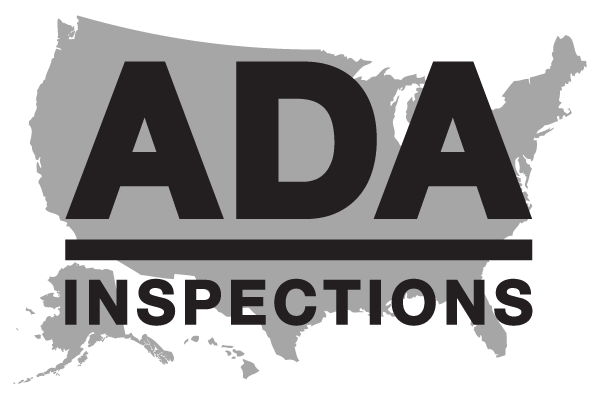The Americans with Disabilities Act (ADA) has a requirement for an accessible circulation path leading to a primary function area when a facility is altered. A primary function is a major activity for which the facility was intended.
Read MoreThere is a difference between what is a building alteration and what is periodic maintenance. A building alteration is defined in the 2010 ADA Standards as “A change to a building or facility that affects or could affect the usability of the building or facility or portion thereof. Alterations include, but are not limited to, remodeling, renovation, rehabilitation, reconstruction, historic restoration, resurfacing of circulation paths or vehicular ways, changes or rearrangement of the structural parts or elements, and changes or rearrangement in the plan configuration of walls and full-height partitions.”
Read MoreThe Justice Department today announced that it reached an agreement with Amtrak, the National Railroad Passenger Corporation, to resolve the department’s findings of disability discrimination in violation of the Americans with Disabilities Act (ADA). Under the agreement Amtrak will fix inaccessible stations and pay $2.25 million to victims hurt by its inaccessible stations.
Read MoreThis article will review the technical requirements for kitchens and kitchenettes with respect to the Americans with Disabilities Act (ADA). First it is important to note that the ADA does not distinguish between kitchens and kitchenettes.
Read MoreThis article will review the technical requirements for kitchens and kitchenettes with respect to the Americans with Disabilities Act (ADA). First it is important to note that the ADA does not distinguish between kitchens and kitchenettes.
Read MoreMulti-story buildings and facilities can require an accessible route, as defined by the Americans with Disabilities Act (ADA), to move above and/or below the main level of entry. Usually this is accomplished by elevators or ramps. This article will focus on elevators.
Read MoreWhether new construction or alterations of existing facilities, the ADA has significant regulations for the locations and counts of toilet rooms and bathing rooms.
Read MoreToilet and Bathing Rooms are critical spaces in the Americans with Disabilities Act (ADA). Whether new construction or alterations of existing facilities, the ADA has significant regulations for the locations and counts of toilet rooms and bathing rooms.
Read MoreEmployee work areas in public accommodations and state or local government facilities are subject to the Americans with Disabilities Act (ADA). This article will discuss the basic accessible components of an employee work area including a means to approach, enter and exit the employee work area, for larger employee work areas an accessible circulation path, a means of egress from the employee work area, and an audible fire alarm system with at least the wiring for a visual warning.
Read MoreEmployee work areas in public accommodations and state or local government facilities are subject to the Americans with Disabilities Act (ADA). This article will discuss the basic accessible components of an employee work area including a means to approach, enter and exit the employee work area, for larger employee work areas an accessible circulation path, a means of egress from the employee work area, and an audible fire alarm system with at least the wiring for a visual warning.
Read MoreNew Construction versus Alteration of a building. This issue comes up a lot in the Americans with Disabilities Act (ADA) world. An alteration is defined in the 2010 ADA Standards as “A change to a building or facility that affects or could affect the usability of the building or facility or portion thereof.”
Read MoreDining Surfaces in public places must comply with the ADA Laws if the dining surfaces are fixed or built-in elements. Dining surfaces include, but are not limited to, bars, tables, lunch counters, and booths.
Read MoreCheckout aisles have unique Standards within the Americans with Disabilities Act (ADA). 2010 ADA Standards 216.11, 227.2 and 904.3 cover the accessibility requirements for checkout aisles. Checkout aisle installations must comply with ADA Standards for height, width, numbers, and signage.
Read MoreFood Service Counters have unique Standards in the ADA Laws. 2010 ADA Standards 227.3, 227.4, 227.5, and 904 cover the accessibility requirements of Food Service Counters. If you observe a building or food service counter that is not ADA compliant and you would like to know how to proceed, please see the link at What To Do When A Building Is Not ADA Compliant or Accessible.
Read MoreFood Service Counters have unique Standards in the ADA Laws. 2010 ADA Standards 227.3, 227.4, 227.5, and 904 cover the accessibility requirements of Food Service Counters. If you observe a building or food service counter that is not ADA compliant and you would like to know how to proceed, please see the link at What To Do When A Building Is Not ADA Compliant or Accessible.
Read MoreThe Tennessee Justice Center (TJC) lists funding options for medical care for children in Tennessee with medical needs.
Read MoreStarting Monday, November 23, 2020, families can complete the online self-referral form through TennCare Connect to begin applying for the Katie Beckett program. Get more information on the new program here. A Certified Aging in Place Specialist (CAPS) consultant can help with the design and installation of aging in place home modifications for children with medical needs.
Read MoreCheckout aisles have unique Standards within the Americans with Disabilities Act (ADA). 2010 ADA Standards 216.11, 227.2 and 904.3 cover the accessibility requirements for checkout aisles. Checkout aisle installations must comply with ADA Standards for height, width, numbers, and signage.
Read MoreNew Construction versus Alteration of a building. This issue comes up a lot in the Americans with Disabilities Act (ADA) world. An alteration is defined in the 2010 ADA Standards as “A change to a building or facility that affects or could affect the usability of the building or facility or portion thereof.”
Read More
